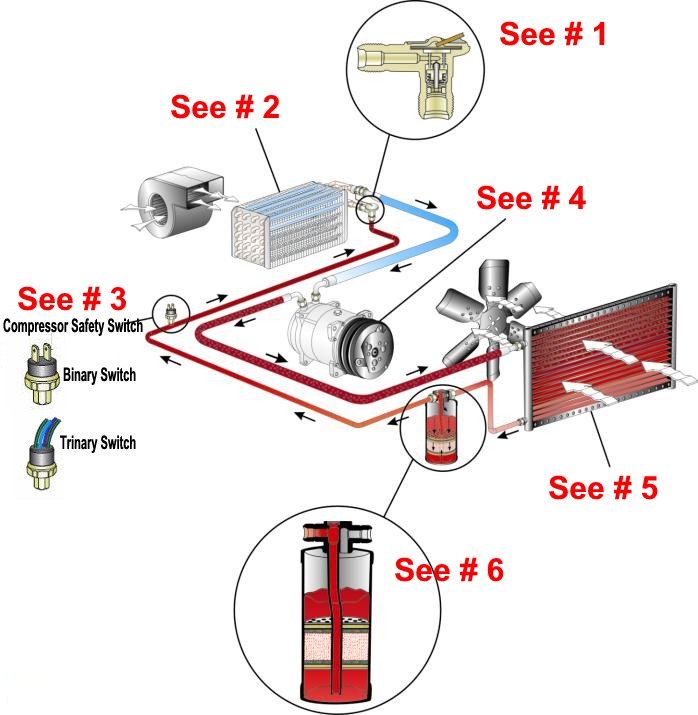Functions of the AC System Components
At Vintage Air, we consider technical assistance a big part of the service that we provide to our customers before, during, and after the sale.
The most important thing to remember when selecting or working on an air conditioning system is that it’s a system. The components must be properly sized, selected, and installed for the system to work efficiently. Once the components have been selected and installed, the system must be evacuated and charged properly and accurately by volume and weight. Today’s refrigerant and climate control systems are extremely charge sensitive, and a correct charge is critical to system performance.
The most common problem our technicians deal with on a daily basis is incorrect charging, with an over charged system being the most common issue. The best way to charge your system is with a quality charging system or charge/recovery machine. This method allows you to dial in the proper amount of refrigerant, and eliminates the guesswork associated with filling the system using individual cans.
We have included a basic diagram of an A/C System, its components and their functions along with instructions for charging your system both with and without a recovery station. We have also included a troubleshooting guide to help you isolate problems with an existing system and a basic electric fan and trinary safety switch-wiring diagram. Air conditioning gauges are almost essential in troubleshooting a system that is not operating properly, so if you do not have access to a set, you will need to enlist the help of a qualified A/C Service Center
 |
|
|
||||||||||
# 1) The expansion valve regulates refrigerant flow and drops the liquid pressure. This pressure split changes the refrigerant to a very cold vaporizing liquid spray.
# 2) The evaporator absorbs heat from interior air due to Latent Heat of Vaporization as liquid changes to gas vapor.
# 3) Compressor Safety Switch. The Binary switch disengages the compressor clutch in response to excessive refrigerant pressure or low threshold pressure (loss of refrigerant). The Trinary Switch combines Binary functions with a fan engagement signal.
# 4) The Compressor is a refrigerant-gas circulating pump which draws low pressure, medium temp vapor from the evaporator and raises its pressure and temperature.
# 5) The Condenser dissipates heat to ambient air resulting in Latent Heat of Condensation from the refrigerant and changes it to a high-pressure liquid.
# 6) The Receiver Drier separates liquid from vapor. The Receiver Drier contains desiccant and filters to remove moisture, acid and contamination from the refrigerant.


